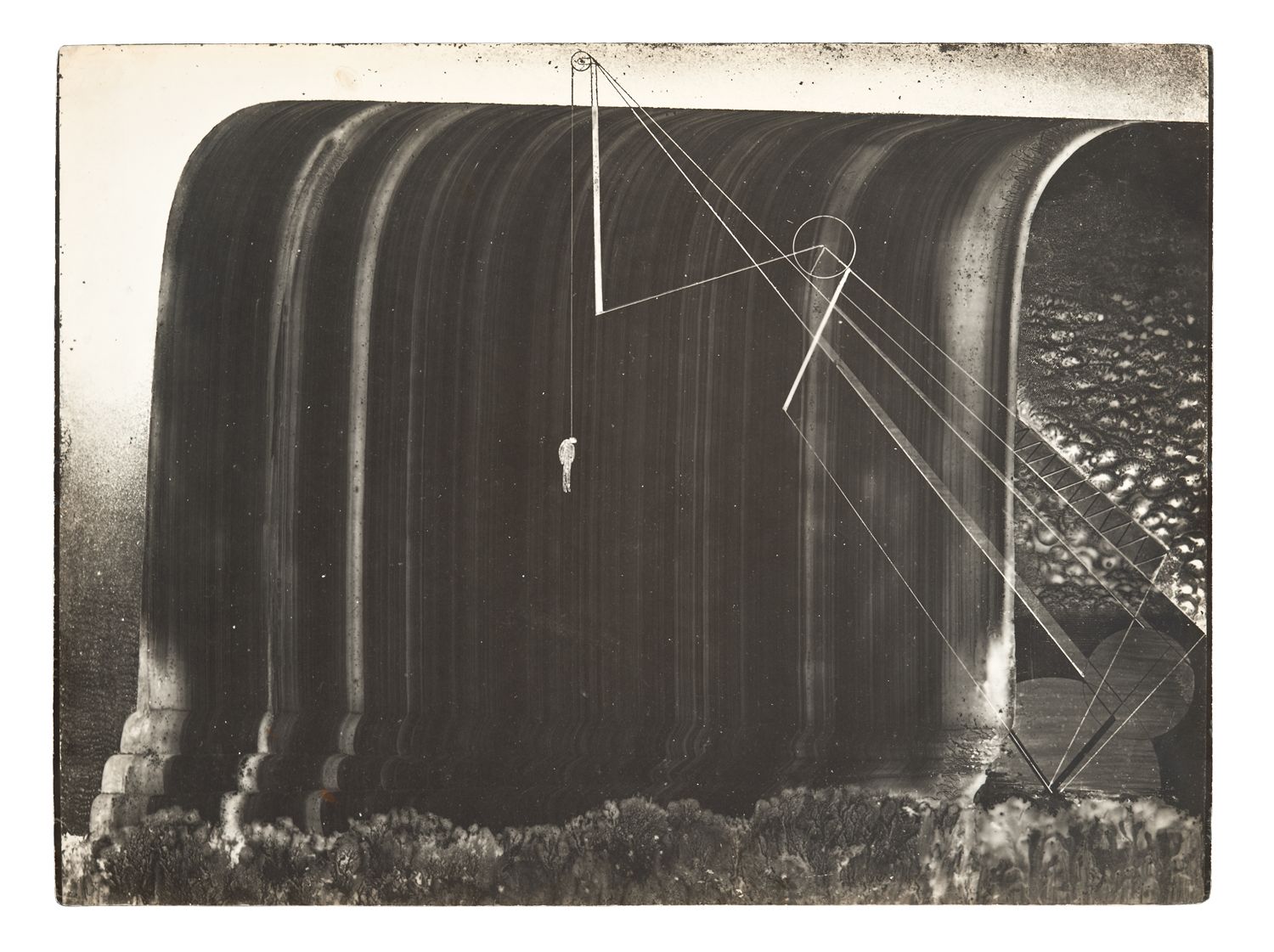Karol Hiller
Heliographs
1931–1939
15.12–15.02.19
Karol Hiller as an artist has been usually compared to icons of modernity such as Man Ray or László Moholy-Nagy. However, while Man Ray was proud to use the unexpected potential of chance in his photograms, Hiller wanted to master this element. The artist coming from Łódź developed his very own, new technique: the heliograph.
“He [Hiller – WK-B] grew up amidst the rumble of weaving workshops, amongst the rhythm of jittering machines and the whirr of motorcycles, alongside the ruddy faces of workers. Machines and various forms of handcraft become an important theme in his work. The artist breaks them down into individual simple elements, subjects them to the laws of stereometry and planimetry, and monumentalizes their individual parts […]”. (Marian Minich, [introduction], in Exhibition of the Collective Works of Painters by Karol Hiller, Warsaw 1938, p. 6.)
The artist does not repeat constructivist patterns directly; what we have here is the author’s own transformation of a very catchy and popular tendency. He works against the assumptions of viewers, who may expect harmonious arrangements and a certain systematization of the play of figures from abstraction.
As a sensitive observer, disillusioned with the processes of modernisation and the collapse of the ideals of the avant-garde of the 1920s, Hiller can be fully discovered when we see in his works deeply moving catastrophic themes. In contrast with other works by the artist, in which Hiller reaches for the potential of metaphor, the hitherto safe world of abstraction turns out to be marked with the stigma of existential anxiety. The balanced compositional arrangements are disturbed by the play of allusive ambiguities. The harmonious, sterile minimalism is misguiding. The deformations, condensation of matter, aggressive damming of crystalline forms – all these elements consistently build visual tension.
A new way of reading Hiller’s art may be brought about by juxtaposing his works with works realized by photographers from outside our native cultural milieu. Profiles of Hungarian artists, such as György Lőrinczy (1935-1981) or László Haris (b. 1943) are worth mentioning here. These artists evocatively speak of a new dimension of cruelty; they bear witness to the memory of such painful experiences that the image attempting to touch them must be based on understatement. In Hiller’s oeuvre, like that of the artists mentioned above, (representing a new generation), is “opalescent with the poetics of the ‘squeezed voice,'” as Primo Levi would say poetically. These artists enter the territory of the unimaginable
Works
| Status | Title | Year | Technique | Dimensions | |
|---|---|---|---|---|---|
| Loading… |

|
Heliographic Composition (XLI) | c.1933 | heliograph on photographic paper | 23.5 x 18 cm |
| Loading… |

|
Heliographic Composition (XXXVI) | c.1936 – 1937 | heliograph on photographic paper | 39.5 x 29.7 cm |
| Loading… |

|
Heliographic Composition (XXIX) | c. 1936-1937 | heliograph on photographic paper | 31 x 28 cm |
| Loading… |

|
Heliographic Composition (XXXVI) | c. 1936 – 1937 | heliograph on photographic paper | 39.5 x 29.7 cm |
| Loading… |

|
Heliographic composition | c. 1936-1937 | ||
| Loading… |

|
Heliographic composition XXIV | 1938 | heliograph, photographic paper | 38.4 x 30 cm |
| Loading… |

|
Heliographic composition XXV | 1938 | heliograph, photographic paper | 38.4 x 29.5 cm |
| Loading… |

|
Heliographic composition XXXVII | 1939 | heliograph, photographic paper | 30.5 x 20.9 cm |
| Loading… |

|
Heliographic composition XL Hangman | |||
| Loading… |

|
Heliographic composition XLIII |


